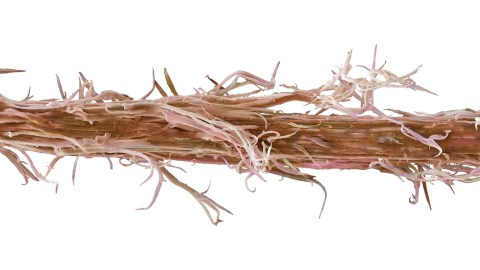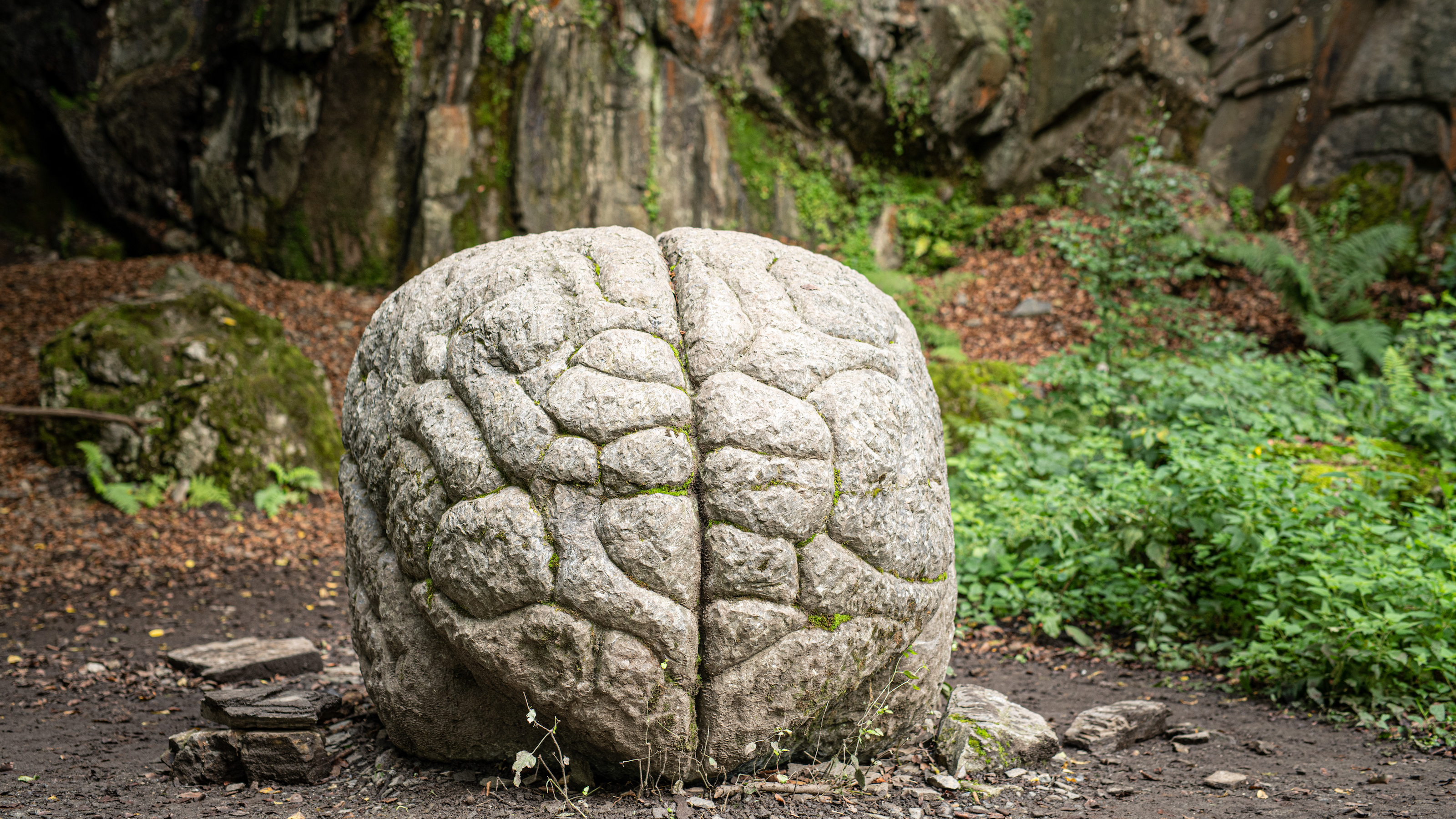Could you become a ‘natural’ blonde by altering your genes?

A few weeks after preparing them, Dr Catherine Guenther checked her mouse embryos and knew that she had identified the source of a blond-haired mutation in human DNA.
The not-yet-fully-formed mice looked like tiny Portuguese men o’ war – bulbous, translucent and speckled blue at the edges.
Guenther copied sequences of human DNA near a gene called KITLG. She fused the sequence with another piece of DNA that encodes for an enzyme and injected the linked pieces into mouse embryos, which incorporated the DNA in their chromosomes.
When Guenther inspected the embryos closely she could see the enzyme’s blue precipitate within their hair follicles, leading her to conclude that the DNA sequence she added played a crucial part in hair follicle development. “I showed the embryos to Dr Kingsley before I went home that day and we were very excited,” says Guenther. “We had proven that there was a hair follicle control element in this region that could be different between blondes and brunettes in Northern Europeans.”
The human molecular factory in charge of colouration churned out the same edict for hundreds of thousands of years: make pigment! Then, at some point, the product diversified. To adapt to less sunlight as early humans moved into higher latitudes, the genes of our ancestors adjusted melanin density in the skin. With less ultraviolet-absorbing melanin, humans could make much-needed vitamin D from sunlight penetrating the skin.
But no one knows exactly when or why humans began to display variation in hair and eye colour. One theory focuses on the high population of fair-haired people in northern Europe and presumes that during the Ice Age, an imbalance of women to men drove the development of unique hair and eye colour that would catch the attention of a potential mate. The human molecular factory simply required a decrease in melanin production to impose such a monumental evolutionary effect.
Guenther works as a research scientist in the lab of Dr David Kingsley at Stanford University. The Kingsley lab studies human evolution, seeking to answer questions about how humans came to be, well, human.
In 2007, collaborating scientists in Iceland and the Netherlands published a paper describing how they had scanned the genome for variants associated with human pigmentation and found 60 distinct areas where a one-letter change in the genetic code resulted in lighter skin, eyes or hair. One of these single-nucleotide polymorphisms (SNPs), as they are called, resided near the KITLG gene.
The Kingsley team pored over genetic data repositories, searching for places in the genetic code near the KITLG gene that tell the gene what to do. They found a location in the DNA where proteins known as transcription factors bind to the sequence and carry out the instructions specified in the code.
They discovered that if the nucleotide guanine holds that spot, the transcription factor cannot bind as tightly to the DNA as when another nucleotide (adenine) is in the same position. This simple alteration – replacing A with G in the DNA sequence – reduces the expression of the gene and, ultimately, changes the colour of the hair.
Guenther’s blue-flecked mice prove that the Kingsley group found the spot on the genome that informs hair follicles how much melanin to incorporate into hair.
Next, the group wanted to know what would happen if they gave mice one set of KITLG instructions versus another – one set reading ‘make a blond mouse’, and the other reading ‘create a brunette’. Reproducibly, the mouse given the blond variant has lighter-toned fur than the mouse with the brunet variant.
So if we understand the precise genetic origin of such a trait, can we manipulate our genes to achieve a desired appearance? Could humans, for example, inject the DNA sequence for the blond variant and override the instructions to make brunet hair? If only it were so simple. Researchers have identified more than 12 chromosomal regions associated with hair colour so far, including regions in eight genes associated specifically with blond hair. Furthermore, the KITLG gene serves in more than one location. “I think hair dye is going to be around for a while,” says Guenther.
A few weeks after preparing them, Dr Catherine Guenther checked her mouse embryos and knew that she had identified the source of a blond-haired mutation in human DNA. The not-yet-fully-formed mice looked like tiny Portuguese men o’ war – bulbous, translucent and speckled blue at the edges.
Guenther copied sequences of human DNA near a gene called KITLG. She fused the sequence with another piece of DNA that encodes for an enzyme and injected the linked pieces into mouse embryos, which incorporated the DNA in their chromosomes.
When Guenther inspected the embryos closely she could see the enzyme’s blue precipitate within their hair follicles, leading her to conclude that the DNA sequence she added played a crucial part in hair follicle development. “I showed the embryos to Dr Kingsley before I went home that day and we were very excited,” says Guenther. “We had proven that there was a hair follicle control element in this region that could be different between blondes and brunettes in Northern Europeans.”
The human molecular factory in charge of colouration churned out the same edict for hundreds of thousands of years: make pigment! Then, at some point, the product diversified. To adapt to less sunlight as early humans moved into higher latitudes, the genes of our ancestors adjusted melanin density in the skin. With less ultraviolet-absorbing melanin, humans could make much-needed vitamin D from sunlight penetrating the skin.
But no one knows exactly when or why humans began to display variation in hair and eye colour. One theory focuses on the high population of fair-haired people in northern Europe and presumes that during the Ice Age, an imbalance of women to men drove the development of unique hair and eye colour that would catch the attention of a potential mate. The human molecular factory simply required a decrease in melanin production to impose such a monumental evolutionary effect.
Guenther works as a research scientist in the lab of Dr David Kingsley at Stanford University. The Kingsley lab studies human evolution, seeking to answer questions about how humans came to be, well, human.
In 2007, collaborating scientists in Iceland and the Netherlands published a paper describing how they had scanned the genome for variants associated with human pigmentation and found 60 distinct areas where a one-letter change in the genetic code resulted in lighter skin, eyes or hair. One of these single-nucleotide polymorphisms (SNPs), as they are called, resided near the KITLG gene.
The Kingsley team pored over genetic data repositories, searching for places in the genetic code near the KITLG gene that tell the gene what to do. They found a location in the DNA where proteins known as transcription factors bind to the sequence and carry out the instructions specified in the code.
They discovered that if the nucleotide guanine holds that spot, the transcription factor cannot bind as tightly to the DNA as when another nucleotide (adenine) is in the same position. This simple alteration – replacing A with G in the DNA sequence – reduces the expression of the gene and, ultimately, changes the colour of the hair.
Guenther’s blue-flecked mice prove that the Kingsley group found the spot on the genome that informs hair follicles how much melanin to incorporate into hair.
Next, the group wanted to know what would happen if they gave mice one set of KITLG instructions versus another – one set reading ‘make a blond mouse’, and the other reading ‘create a brunette’. Reproducibly, the mouse given the blond variant has lighter-toned fur than the mouse with the brunet variant.
So if we understand the precise genetic origin of such a trait, can we manipulate our genes to achieve a desired appearance? Could humans, for example, inject the DNA sequence for the blond variant and override the instructions to make brunet hair? If only it were so simple. Researchers have identified more than 12 chromosomal regions associated with hair colour so far, including regions in eight genes associated specifically with blond hair. Furthermore, the KITLG gene serves in more than one location. “I think hair dye is going to be around for a while,” says Guenther.
Image: Microscopic image of a damaged human hair that has been bleached and straightened.
This article first appeared on Mosaic and is republished here under a Creative Commons licence.





